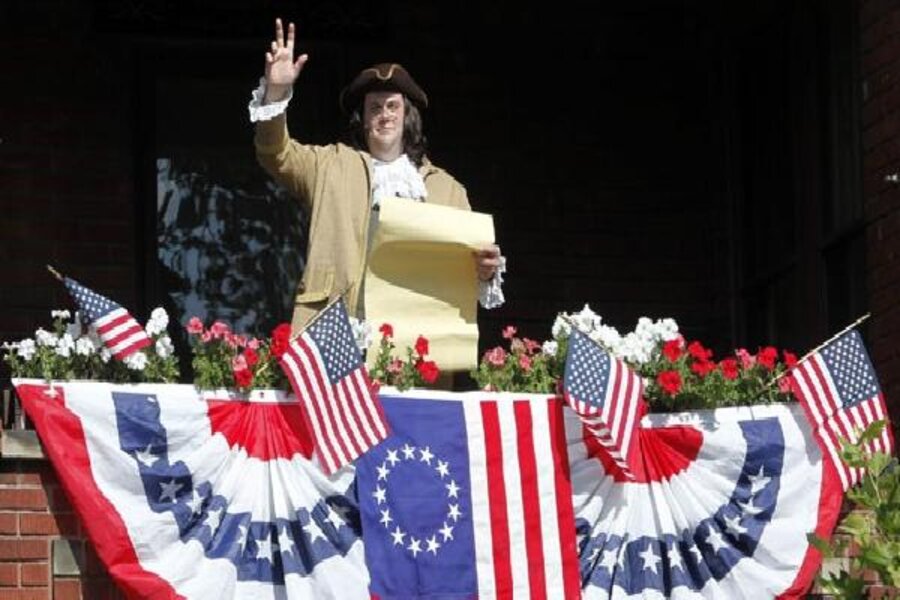Five things you may not know about the Fourth
Loading...
Fourth of July: It’s that day of the year when Americans overgrill meat, dress unenthusiastic dogs in bunting, explain to kids why sparklers are dangerous, and generally celebrate in their own ways the glorious continuing political experiment that is the US republic.
But one thing it is not is a national holiday.
Surprised? You probably won’t be when you think about it. This is America. We don’t have any national holidays. Congress can only create federal holidays, which US government workers around the nation have off. That’s also the case for everyone in the District of Columbia, which is a federal district. (We are peeved about that, but that is another story.)
States can enact their own holidays, which they do. The first state to officially designate July 4 as a holiday was Massachusetts, in 1781. The first federal legislation on the subject was not passed until 1870, according to an exhaustive database of Independence Day trivia compiled by James Heintze, a librarian at American University here in Washington.
Why we celebrate. Quick, what does the Fourth commemorate? No, it is not the day Ben Franklin invented the gas grill. It’s the day the Continental Congress, meeting in Philadelphia, adopted the Declaration of Independence.
The Declaration was not read in public until July 8, however. Perhaps Franklin was busy inventing bifocals so he could see the fine print.
Why red, white, and blue? Decoder has always wondered why America’s national colors are red, white, and blue – or, as clothing retailers might name them, snow, bright rhubarb, and classic indigo.
Well, flag experts have different explanations, as it turns out. Some say the blue represents the heavens, the red Britain, and the white stripes separation from Britain. Others say white signifies purity, red means valor, and blue is the color of justice.
One thing is certain: The word flag experts use to describe themselves is “vexillologist.” Cool.
Notable fireworks mishaps. Explosions have always been part of the Glorious Fourth. Cannonades, firecrackers, and so forth were present from 1778 on, according to the research of the aforementioned Mr. Heintze.
Sometimes this has led to unfortunate incidents. In 1786, the Beaufort, N.C., courthouse burned down after being hit by an artillery shell fired as part of a July 4 celebration. In 1843, a church in Poughkeepsie, N.Y., burned to the ground as a result of a boy’s firecracker experiment. In 1864, Secretary of State William Seward narrowly escaped injury when he was hit above the eye by a boy-launched rocket.
And that is why you have to turn over those Roman candles right now, mister. I don’t care what your mother said.
Shiver-inducing coincidence. The second, third, and fifth presidents of the US all died on July 4.
Thomas Jefferson (No. 3) and John Adams (No. 2), titans among the Founding Fathers both, famously died within hours of each other on July 4, 1826, the 50th anniversary of the founding of the nation. Adams’s last words were “Jefferson still survives.” Sadly, he did not.
Less noted is the fact that James Monroe (No. 5) also died on Independence Day, in 1831.





